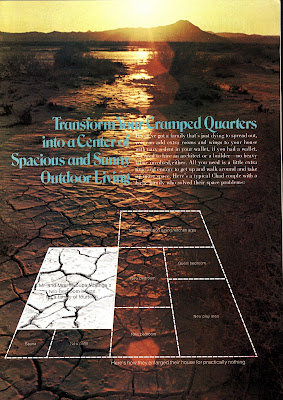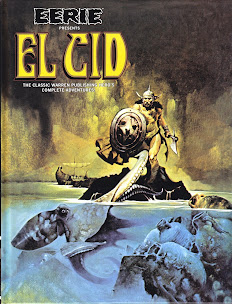Book Review: 'Alfred Hitchcock Presents: Scream Along with Me'
4 / 5 Stars
There also was a monthly digest, Alfred Hitchcock's Mystery Magazine, that was very successful (it was launched in December 1956, and still is published today).
Robert Arthur, Jr., the US author who edited much of the media in the Hitchcock franchise, even launched a series of mysteries for juveniles, using the Hitchcock affiliation as a marketing tool. From 1964 to 1987, 43 volumes of 'The Three Investigators' books were published. I read a number of these and found them to be entertaining, back in my junior high school days.
Of particular prominence among the franchise's enterprises were the 'Alfred Hitchcock Presents' paperback anthologies from Dell. These were commonplace on store shelves during the 60s and 70s. According to the Dell wiki, the 'Alfred Hitchcock Presents' series began in June 1958 with 'Alfred Hitchcock Presents: 12 Stories They Wouldn't Let Me Do on TV', and ended in October 1979 with 'Alfred Hitchcock: Breaking the Scream Barrier'.
I remember reading the Hitchcock anthologies, and even buying a few of them, as a teenager. I have five or six of them sitting in a box somewhere in my basement.........
Anyways, 'Alfred Hitchcock Presents: Scream Along with Me' (224 pp.) is an abridged version of the 1967 hardcover anthology 'Alfred Hitchcock Presents: Stories that Scared Even Me'. My copy of 'Scream' (above) was issued in September 1977. The first Dell edition (pictured below) was published in 1970.
The stories in 'Scream Along with Me' all saw print in an eclectic assortment of various books and magazines, including the more popular 'slick' magazines such as The Saturday Evening Post, in the interval from 1913 to 1967.
My capsule summaries of the contents:
Fishhead, by Irvin S. Cobb (1913): the eponymous backwoods resident isn't someone you want to mess with.
Camera Obscura, by Basil Copper (1965): a moneylender meets the intriguing Dr. Gingold.
A Death in the Family, by Miriam Allen deFord (1961): oldie but goodie about a man with peculiar habits.
The Knife, by Robert Arthur (1951): it's not just an ordinary utensil. I suspect most readers will see where the plot is going well in advance. I would argue that 'The Knife' ably prefigures two of the most provocative stories in Harlan Ellison's 1967 anthology Dangerous Visions.
Casablanca, by Thomas M. Disch (1967): a middle-aged American couple, self-absorbed and dismissive, find their vacation in Morocco abruptly upended.
First published in New Worlds magazine, this is a very well-plotted and well-written story, with low-key sci-fi overtones. 'Casablanca' had me concluding that when Disch wasn't trying so hard to turn out 'speculative fiction' pieces (like 'The Squirrel Cage') for the New Wave movement, he was quite capable of writing very good, 'traditional' short stories.
The Road to Mictlantecutli, by Adobe James (1965): Morgan, a ruthless criminal, is travelling on a deserted road in Mexico. The strange sights and passions he encounters will lead him to change his life........for good, or for ill.
'Adobe James' was the pseudonym of American writer James Moss Cardwell (1926 – 1990), who had his short stories published in a variety of magazines and anthologies during the 1960s, 1970s, and 1980s.
'Road' first appeared in issue 20 of the Adam Bedside Reader, and went on to be a staple entry in many anthologies, including The Sixth Pan Book of Horror Stories (1965) and The Arbor House Treasury of Horror and the Supernatural (1981). It skillfully imbues supernatural gongs-on with a moral theme, and in my opinion, is one of the best horror stories of the sixties.
Guide to Doom, by Ellis Peters (1963): short-short tale of a chateau with a disturbing history.
The Estuary, by Margaret St. Clair (1950): another short-short tale, and perennial anthology favorite.
Tough Town, by William Sambrot (1957): a travelling salesman finds himself in the wrong kind of town.
The Troll, by T.H. White (1935): mild tale about a creature from Scandinavian fable.
Evening at the Black House by Robert Somerlott (1964): this first appeared in Cosmopolitan magazine (?!). It's a tale with a twist at the end. Well done.
One of the Dead, by William Wood (1964): this story originally appeared in The Saturday Evening Post in October 31, 1964 (the illustration below is from that issue). While a bit over-written, it's one of the better psychological horror stories I've read.
It adroitly combines the haunted house trope with insightful observations about the anomie of mid-century suburban life in Los Angeles. There is an undertone of creepiness that comes to fruition in the story's final sentence. I finished 'One of the Dead' thinking that this sole story from Wood is markedly superior to many stories originating from better-known 'quiet horror' practitioners like Robert Aickman, T. E. D. Klein, Dennis Etchison, and Charles L. Grant.
Information about author Wood is scant. According to the Science Fiction Encyclopedia he may have been a UK author, who wrote a 1962 novel titled The News from Karachi.
The Real Thing, by Robert Specht (1966): short-short about the village simpleton, with a 'shock' ending.
Journey to Death, by Donald E. Westlake (1959): a sea cruise can be problematic.
The Master of the Hounds, by Algis Budrys (1966): strange things are happening in rural New Jersey. Another story that first saw print in The Saturday Evening Post (August, 1966; cover above). Who would have thought The Post published so many horror / suspense stories back in the day ?!
The Candidate, by Henry Slesar (1961): corporate competitiveness gets a new dimension. Another story that reinforces my belief that Slesar (1927 -2002) was one of the more talented short-short story writers of the second half of the 20th century.
It, by Theodore Sturgeon (1940): old-school tale of the predecessor to the 'swamp monsters' of the 1970s (like the Man-Thing and the Swamp-Thing).
Summing up, when reading these Hitchcock anthologies during the mid-70s, I tended to regard them as rather fuddy-duddy.
But when read nowadays, with the benefit of greater familiarity with the horror / suspense genre, it's very clear that, compared to anthologies such as The Year's Best Horror Stories or Whispers or Shadows, there often are better short stories in the Hitchcock volumes, even if these stories had previously been published in the 1960s (or even earlier).
Accordingly, I recommend 'Alfred Hitchcock Presents: Scream Along with Me' to fans of horror and suspense literature.






















































.jpg)



















